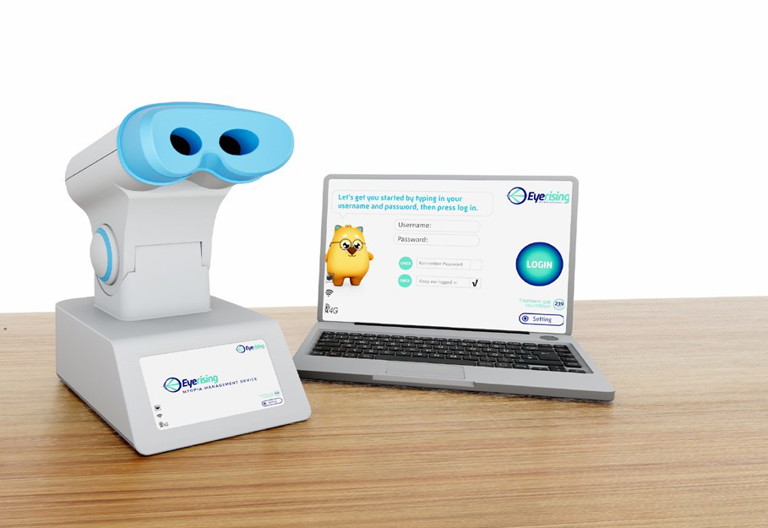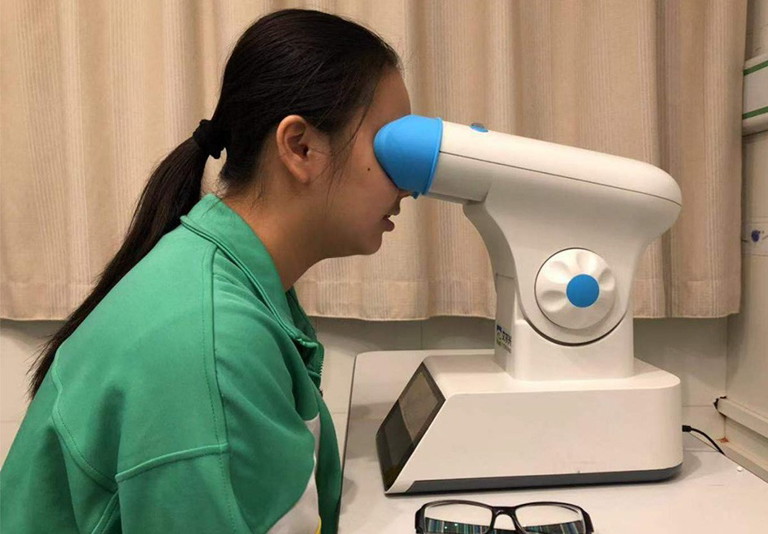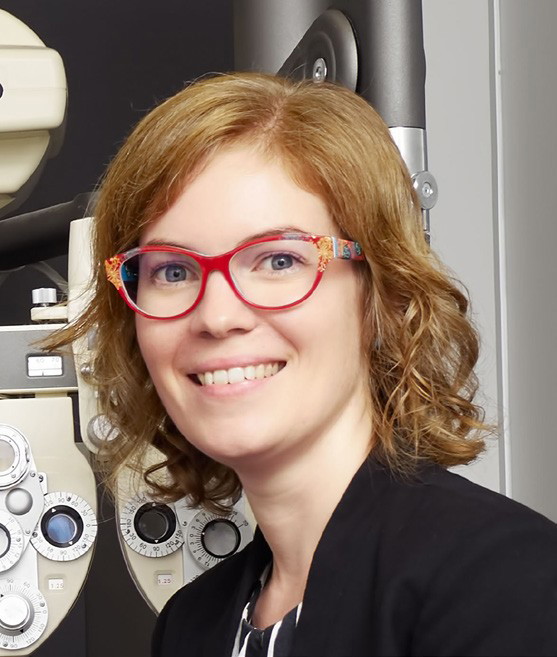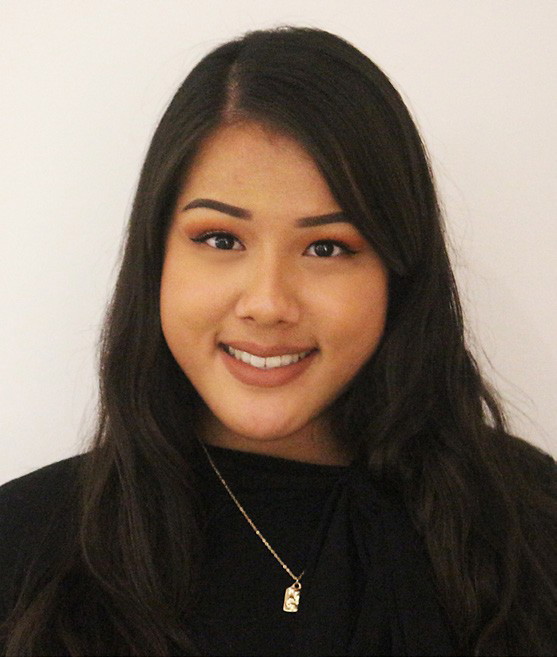mieducation
Global Insights on Repeated Low-Level Red-Light Therapy for Myopia
In recent years, a multitude of journals have published articles on the use of repeated low-level red-light therapy (RLRL) to manage myopia. Dr Kate Gifford, founder of Myopia Profile and guest editor of this issue of mivision, recently interviewed three distinguished experts of ophthalmology and optometry – Professor Andrzej Grzybowski from Poland, Professor Kyoko Ohno-Matsui from Japan, and Dr Nellie Deen from Australia – to find out about their research and real-world use of RLRL for myopia management in children. Dr Yuri Aung from Eyerising International, manufacturer of the RLRL myopia device, summarises the conversations.
WRITERS Dr Yuri Aung and Dr Kate Gifford
LEARNING OBJECTIVES
On completion of this CPD activity, participants should be able to:
1. Better understand the potential role repeated low-level red-light (RLRL) therapy plays in myopia control,
2. Be aware of clinical trials underway that are assessing safety and efficacy of RLRL, and
3. Recognise the patients most likely to benefit from RLRL.
Repeated low-level red-light (RLRL) therapy is a promising approach for controlling myopia progression and slowing axial length elongation.1 Although RLRL’s exact mechanism of action remains under investigation, early research from RLRL expert Professor Mingguang He (Hong Kong Polytechnic University) – founder of the Eyerising myopia management device – has shown that this technology causes significant choroidal thickening by increasing retinal blood flow2 and inducing scleral remodelling.3
Unique to RLRL is that as well as slowing axial length elongation, RLRL has been shown – in some patients – to slightly reduce axial length,4 offering a novel opportunity for patients to stabilise or even improve their myopia.5
Multiple studies are underway to understand the cellular mechanisms behind RLRL and how this axial length stabilisation or reduction is achieved, as well as its association with choroidal thickness. Simultaneously, parallel studies and trials are being conducted to assess the efficacy of RLRL in different and specific populations such as non-responders to other myopia control treatments; as well as exploring the safety of RLRL, including the use of more detailed safety indicators such as multifocal electroretinography.6,7
Two crucial areas of research are the use of RLRL in high myopia, and the adjunct use of RLRL with other myopia control treatments.
Two recent randomised controlled trials (RCTs) published in Ophthalmology have detailed studies on RLRL efficacy in these populations. The first was a 12-month RCT of highly myopic children, axial length shortening of -0.06 mm over a 12-month period with RLRL and stability of spherical equivalent refraction.8 The second was a trial investigating the adjunct use of RLRL in patients with significant myopic progression on orthokeratology alone over the past 12 months of 0.50 mm.9 Over a 12-month period, the trial showed far improved efficacy with mean axial stability (no change) in the combined therapy group. Adding to this data, new research and clinical observations were described by the following experts.
EUROPE: PROFESSOR ANDRZEJ GRZYBOWSKI
Background and Introduction to RLRL
Prof Grzybowski is an ophthalmologist based in Poland with over 20 years of experience in myopia control. He first encountered RLRL through several articles published in 2022 and 2023 on early use of the Eyerising device. Intrigued by the promising results, he reached out to Eyerising International to collaborate on designing a research study for European children.
Initial Hands-On Observations
Prof Grzybowski is currently using RLRL for several of his patients in Poland. From his extensive experience, what sets RLRL apart from other myopia control interventions is its noninvasive nature, particularly for parents who are averse to contact lenses, as well as its compliance monitoring process that enables practitioners to determine accurate patient adherence, to help assess its association with treatment effect.
Prof Grzybowski believes this is a key advantage of RLRL over atropine for example, where compliance can be difficult to monitor, as it relies on patients consistently and successfully administering eye drops. In contrast, the automatic usage reports generated by RLRL on a monthly or quarterly basis allow practitioners to verify how often the therapy is being used. This data can then be discussed with patients and their families to address any issues and improve their compliance.
As RLRL becomes commercially available, Prof Grzybowski suggested that some key areas of RLRL uptake could be in highly myopic patients, very young patients, or children who are not keen on contact lenses. He suggested it could also be used to treat non-responders to conventional myopia treatment, and as a combination therapy (with orthokeratology, for example) to enhance effectiveness.
Case Study: The Young Myopic Patient
One of the case studies highlighted by Prof Grzybowski was of a three-year-old child with an unusually high degree of myopia of -9D. The child had been using anti-myopic glasses and atropine without significant success. Upon the introduction of RLRL, the child’s myopia progression has now stabilised.
This case demonstrates the potential of RLRL in addressing three challenging subsets of myopic patients: very young patients (where contact lenses are unsuitable), highly myopic patients, and non-responders to conventional myopia treatments. These findings warrant further investigation on a larger scale.
The European Real-World Study
Prof Grzybowski described the European real-world study that he is leading, which involves 70 children across seven countries (10 children per institution). This one-year study aims to determine whether RLRL can effectively control myopia progression in European children, with full myopia control defined as axial elongation of less than 0.1 mm per year. The study has begun its recruitment stages, and he hopes to present interim data next year, providing valuable insights into the effectiveness and safety profile of RLRL in children from multiple European countries. The results of this study will undoubtedly be crucial for validating the effectiveness and tolerability of RLRL among Caucasian children.
AUSTRALIA: DR NELLIE DEEN
Background and Introduction to RLRL
Dr Deen is an optometrist and General Manager of City Clinics at the Australian College of Optometry (ACO). She first encountered RLRL through a chance meeting with Prof He, at the ACO, in 2022. They then collaborated to set up an RCT on the efficacy of RLRL in multi-ethnic children, mirroring the protocols from the landmark Chinese trial by Jiang et al.10 but in a non-Chinese population that reflects the multicultural population of Australia. The study received ethics approval from the Royal Children’s Hospital in Melbourne in late 2022. Its primary outcome was axial length change, with spherical equivalence refraction, optical coherence tomography (OCT), and fundus photography as key secondary outcomes and safety indicators.


The Eyerising myopia management device (top), and the device in use (bottom).
Three-Month Interim Results
At the three-month visit, the study showed positive results,5 including mean axial stability (slight shortening) and refractive stability in children using RLRL. Interestingly, Dr Deen noted that these results surpassed the efficacy observed in the original Chinese cohort in terms of both axial elongation and spherical equivalence refraction. This efficacy was also sustained at the six-month interval, which is presently undergoing statistical analysis. The study aims to finish by late 2024, with 12-month results anticipated in 2025.
“ children generally found the device easy to use ”
Patient Experience and Compliance
Reflecting on patient feedback, Dr Deen said the children generally found the device easy to use, although some children suggested adding background music to enhance the experience and support compliance.
Dr Deen highlighted the importance of ensuring good treatment compliance, particularly as this has been previously linked with greater RLRL efficacy. In the study, she found that children whose parents were more involved in their treatment (e.g. equipped with detailed instructions on how to use the device, offering rewards for treatment compliance) or those who had a sibling also completing the therapy, showed better compliance. She also found that children who understood the impact of their condition and reasoning for undergoing treatment were more compliant. Regular follow-ups and check-ins also helped to ensure that participants stayed on track.
Future Steps and Long-Term Monitoring
Dr Deen concluded by noting the importance of long-term monitoring of RLRL’s real-world deployment to understand the full impact of RLRL on myopia progression. While the initial results are promising, she said it is essential to track the outcomes of RLRL over an extended period to map how the benefits are sustained and to identify any potential long-term side effects.
JAPAN: PROFESSOR KYOKO OHNO-MATSUI
Background and Introduction to RLRL
Professor Ohno-Matsui is a professor of ophthalmology in Tokyo and Chief of the Advanced Clinical Centre for High Myopia. She first encountered RLRL when she heard about the groundbreaking results of RLRL at a presentation by Prof He several years ago, showing up to 90% efficacy in patients with good compliance, as well as its unique feature of axial shortening. She then launched a collaboration with Prof He and Eyerising International encompassing two randomised controlled trials at Tokyo Medical and Dental University looking into the effects of RLRL in highly myopic children and adults.
Six-Month Interim Results
In the trial of highly myopic children, patients had a high baseline mean spherical equivalent refraction of -9.65D and mean axial length of 27.18 mm.11 Prof Ohno-Matsui remarked at her and her team’s surprise and excitement at observing even better results than anticipated. Shortening of the axial length by 0.05 mm was seen from one month in up to 50% of participants and was sustained by up to 60% of patients at six months. Of this, 43% of patients showed even greater axial length shortening of 0.1 mm at six months. Improvement in spherical equivalent refraction by >0.25D was also seen up to the six-month visit in over 50% of patients. This is particularly promising as this efficacy appears to be even better than what has been seen in low or moderate myopia populations, which Prof Ohno-Matsui explained is especially crucial given that conventional treatments, like atropine and orthokeratology, have less supportive evidence for efficacy in highly myopic populations.
Promising Adult Results
With regard to the trial in highly myopic adults,12 Prof Ohno-Matsui clarified that the focus was to determine if RLRL could avoid the choroidal thinning seen in highly myopic adults, which can later lead to choroidal atrophy and visual impairment. This two-month study has completed its recruitment and is seeing good preliminary results pending full statistical analysis in terms of increased choroidal thickness. She noted that adults have had good compliance to the treatment and have been highly motivated, even taking it with them on business trips as they understand the importance of managing their high myopia. This study aims to wrap up by late 2024, offering new insights into the use of RLRL in a novel adult population.
Safety of RLRL
Regarding the only case report in the literature of an RLRL-related reversible retinal light injury,13 Prof Ohno-Matsui discussed her opinion of this patient potentially having preclinical Stargardt disease causing secondary myopia, as she noted that this patient had a dark choroid specific to Stargardt disease and high fundus autofluorescence not typically seen in children. Therefore, she noted this patient may have been inappropriately started on RLRL in the first place where it
is not indicated in the treatment of secondary myopia. She strongly recommended genetic analysis for this patient to confirm her theory. Prof Ohno-Matsui concluded that in her experience, RLRL is safe and has shown high efficacy, even in highly myopic populations. Going forwards, she encourages its greater uptake globally.
IMPLICATIONS FOR REAL-WORLD APPLICATIONS
A key next step for RLRL is to better understand its real-world applications and long-term use. To this end, the European real-world study and continued data collection from the Australian cohort will guide the use of RLRL as it becomes commercially available in various countries and in non-Asian populations. Insights from research studies and hands-on use will also aid clinicians in identifying their first RLRL patients and how to encourage treatment compliance. This will be coupled with continued efforts into researching the specific use of RLRL in new subsets of the myopic population as well as exploring its potential use in other conditions (e.g. glaucoma, presbyopia, age-related macular degeneration) to open new avenues for treatment.
As discussed by Prof Ohno-Matsui, although no adverse events have been captured in any research study to date, a single case report of retinal light injury was published in the literature. All visual acuity and OCT changes observed in this case were fully reversed upon discontinuation of the treatment.14 Importantly, this case serves to underscore the importance of long-term data collection for RLRL and safety monitoring as a novel method of myopia control.
Another key aspect of RLRL’s real-world deployment is the importance of wider education of both eye care professionals and patients on the use of RLRL, including its proposed mechanism, treatment protocol, evidence basis, and safety profile. Within this, it is crucial to provide clear, updated, and evidence-based information to address concerns regarding the use of a low-level laser, offer support to identify ideal and nonideal candidates, emphasise the importance of treatment compliance for optimal effect, and explain the long-term plan for data collection on treatment effect, rebound effect, and net benefit as the uptake of RLRL increases globally.
CONCLUSION
Repeated low-level red-light therapy presents a promising novel avenue for myopia control, with early studies illustrating strong efficacy and high treatment compliance.15 This article highlights the ongoing research on RLRL involving leading experts in the fields of both optometry and ophthalmology from around the world. Their ongoing studies, and many others in the pipeline, will provide further insights into RLRL’s longterm effectiveness and safety, as well as its efficacy in different myopic populations (e.g. young myopes, high myopes etc.). This will hopefully broaden the toolkit available for diverse populations and provide greater evidence for patients to make informed decisions about their myopia management.
As noted by these experts, the continued long-term data collection and safety monitoring of RLRL, and its real-world application will be pivotal in RLRL, potentially becoming a cornerstone of future myopia management.
This article was sponsored Eyerising International. It was written by Dr Yuri Aung, of Eyerising International and Dr Kate Gifford, based predominantly on the information and opinions provided by the expert interviewees.
To earn your CPD hours from this article visit mieducation.com/global-insights-in-repeated-low-level-red-light-therapy-for-myopia.
References
1. Gifford, K. Repeated low-level red light therapy: a look at safety and efficacy. Available at: myopiaprofile. com/articles/repeated-low-level-red-light-safety-efficacy [accessed June 2024].
2. Xiong, R., Zhu, Z., He, M., et al., Longitudinal changes and predictive value of choroidal thickness for myopia control after repeated low-level red-light therapy.
Ophthalmology. 2023 Mar;130(3):286–296. DOI: 10.1016/j. ophtha.2022.10.002.
3. Liu, Z., Sun, Z., Wei R., et al., The effects of repeated low-level red-light therapy on the structure and vasculature of the choroid and retina in children with premyopia. Ophthalmol Ther. 2024 Mar;13(3):739–759. DOI: 10.1007/s40123-023-00875-x.
4. Wang, W., Jiang, Y., He, M., et al., Clinically significant axial shortening in myopic children after repeated low-level red light therapy: A retrospective multicenter analysis. Ophthalmol Ther. 2023 Apr;12(2):999–1011. DOI: 10.1007/s40123-022-00644-2.
5. Deen, N., Zhu, Z., He, M., et al., Three-month interim analyses of repeated low-level red-light therapy in myopia control in schoolchildren: A multi-ethnic randomized controlled trial, MedRXiv. 2024 Mar;18. DOI: 10.1101/2024.03.16.24304399.
6. Zhu, M., Liu, Y., Xiang, Y., et al., Safety of repeated low-level red-light therapy for children with myopia. Photodiagnosis Photodyn Ther. 2024 May 8;47:104198. DOI: 10.1016/j.pdpdt.2024.104198. Epub ahead of print.
7. Zhang, C.X., Fan, B., Li G.Y., et al., Differences between longand short-wavelength light-induced retinal damage and the role of PARP-1 in retinal injury induced by blue light. Exp Eye Res. 2024 May 28;244:109946. DOI: 10.1016/j.exer.2024.109946. Epub ahead of print.
8. Xu, Y., Cui, L., Zou, H., et al., Repeated low-level red-light therapy for myopia control in high myopia children and adolescents: A randomized clinical trial. Ophthalmology. 2024 Jun 5:S0161-6420(24)00318-X. DOI: 10.1016/j. ophtha.2024.05.023. Epub ahead of print.
9. Xiong, R., Wang, W., He, M., et al., Myopia control effect of repeated low-level red-light therapy combined with orthokeratology: A multicenter randomized controlled trial. Ophthalmology. 2024 May 17:S0161–6420(24)00308-7. DOI:
10.1016/j.ophtha.2024.05.015. Epub ahead of print. 10. Jiang, Y., Zhu, Z., He, M., et al., Effect of repeated low-level red-light therapy for myopia control in children: A Multicenter randomized controlled trial. Ophthalmology. 2022 May;129(5):509-519. DOI: 10.1016/j. ophtha.2021.
11.023. Epub 2021 Dec 1. PMID: 34863776. 11. NHK World Japan, Researchers in Japan: Red light may help improve myopia in children, 19 May 2024. Available at: www3.nhk.or.jp/nhkworld/en/news/20240517_16.
12. Japan Registry of Clinical Trials. Available at: jrct.niph. go.jp/en-latest-detail/jRCTs032230061.
13. Liu, H., Yang, Y., Zhao, P., et al., Retinal damage after repeated low-level red-light laser exposure. JAMA Ophthalmol. 2023 Jul 1;141(7):693–695. DOI: 10.1001/ jamaophthalmol.2023.1548.
14. Tian Y, Xiao Z. Recovery of retinal structural damage after repeated low-intensity red light therapy for high myopia: a case report, Chin J Exp Ophthalmol, 2023, 41 (9), 853-855
15. Youssef, M.A., Shehata, A.R., Gouda, A.T., Efficacy of repeated low-level red light (RLRL) therapy on myopia outcomes in children: A systematic review and metaanalysis. BMC Ophthalmol. 2024 Feb 20;24(1):78. DOI: 10.1186/s12886-024-03337-5.

Dr Kate Gifford PhD BAppSc(Optom) Hons FAAO is a clinician-scientist and peer educator in private practice in Brisbane. She holds four professional fellowships, has written over 100 peerreviewed and professional publications, and has presented over 200 conference lectures around the world, primarily on clinical myopia management. Dr Gifford is the Chair of the Clinical Management Guidelines Committee of the International Myopia Institute and lead author on its report. She is a co-founder and director of the education platform Myopia Profile.

Dr Yuri Aung MBBS BSc(Hons) is the Clinical and Regulatory Affairs Manager at Eyerising International. She holds a medical degree and an intercalated degree in healthcare management from Imperial College London, has published several peer-reviewed publications and has made numerous international presentations.